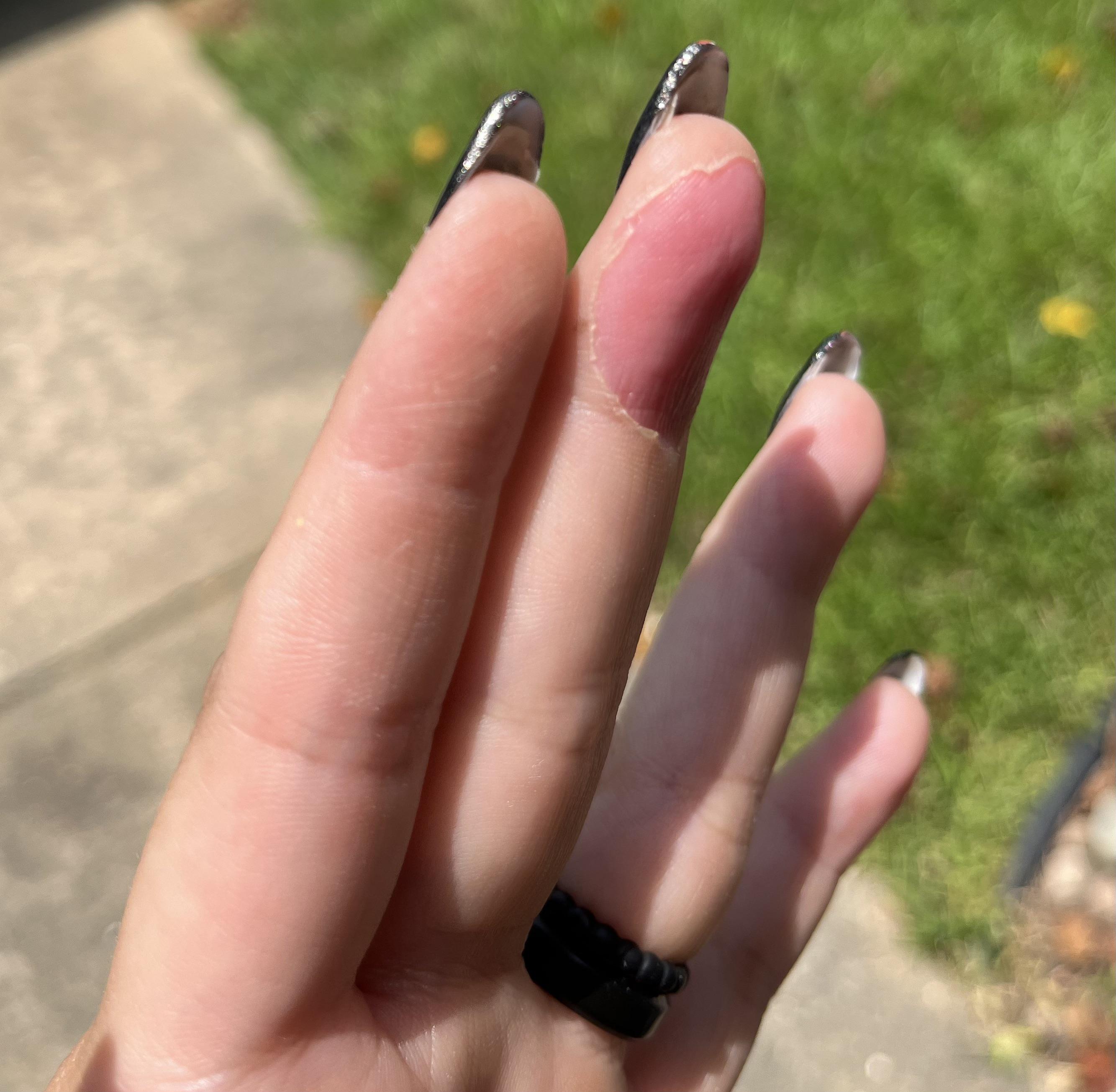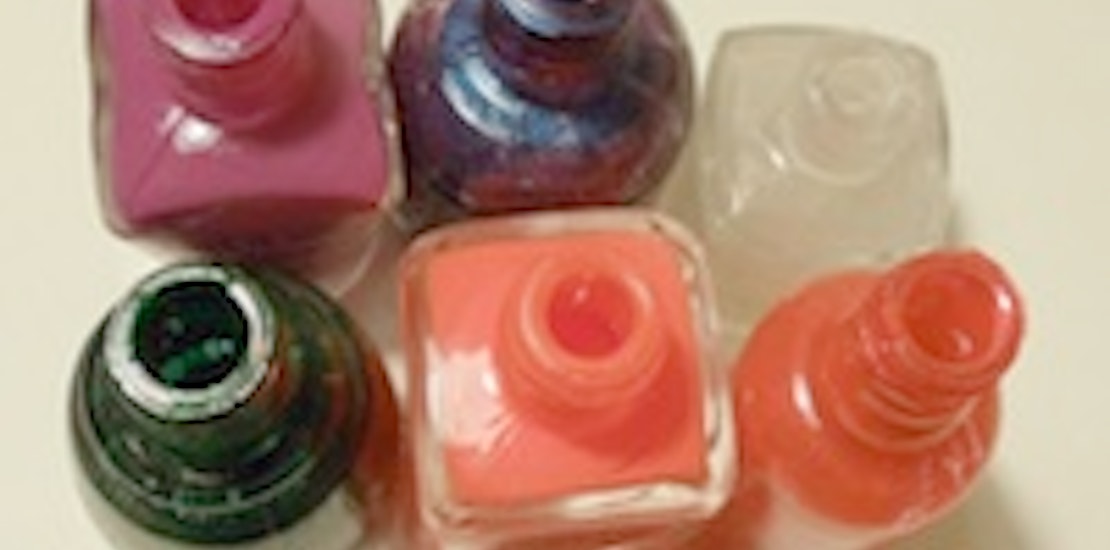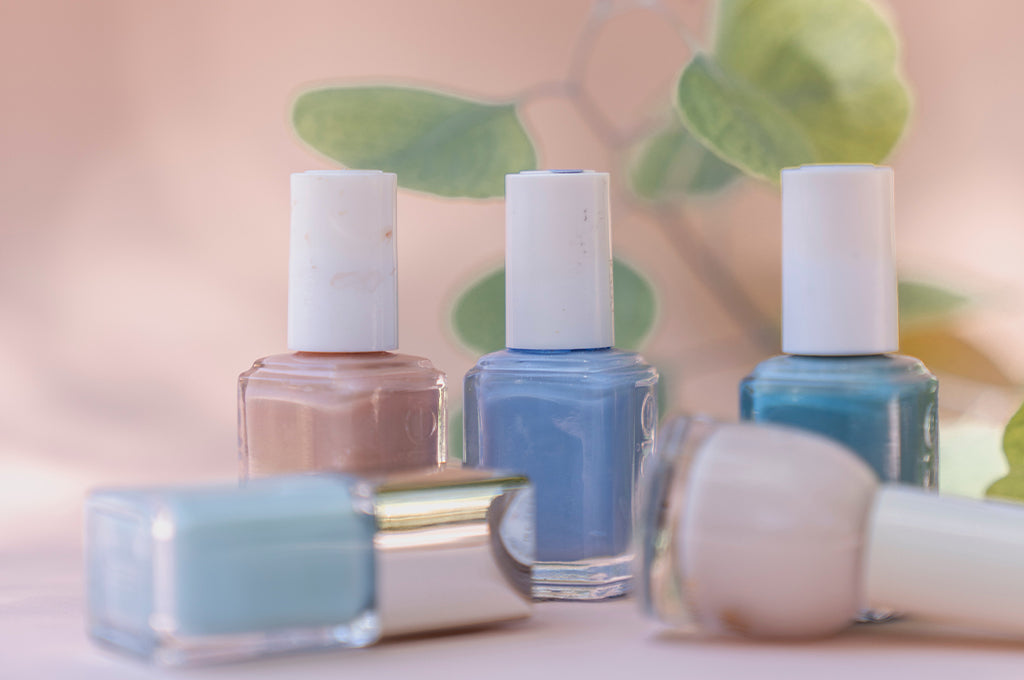Introduction

Introduction:
Understanding the importance of nail product shelf life is essential for maintaining the quality and effectiveness of your nail care routine. Nail polish remover, being a crucial part of the process, also has its own shelf life. While nail polish remover does not technically expire, it can undergo changes in color or appearance as it ages. However, it is important to note that nail polish itself does have an expiration date. In this article, we will delve into the details of nail polish remover, its composition, types, expiration date, signs of expiration, proper storage techniques, alternative options, and the importance of using fresh nail polish remover for optimal results.
Understanding The Importance Of Nail Product Shelf Life
Understanding the importance of nail product shelf life is crucial for maintaining the quality and effectiveness of your nail care routine. Over time, nail products, including nail polish remover, can deteriorate, leading to changes in their performance and even potential risks to your nails and skin. Using expired or old nail polish remover may result in ineffective polish removal, a less smooth and even application of new polish, or even possible damage to your nails. Regularly checking the expiration dates and properly storing your nail products ensures that you achieve the best results and protect the health of your nails.
Factors That Can Affect The Shelf Life Of Nail Polish Remover
There are several factors that can affect the shelf life of nail polish remover:
- Exposure to air: When nail polish remover is exposed to air, it can evaporate, resulting in a loss of effectiveness. It is important to tightly seal the bottle after each use to prevent air from entering.
- Heat and sunlight: Exposing nail polish remover to heat and sunlight can cause it to break down and lose its effectiveness. It is best to store it in a cool, dark place to extend its shelf life.
- Contamination: If the nail polish remover comes into contact with bacteria or other contaminants, it can become spoiled and unsafe to use. Always make sure to use clean tools and avoid any cross-contamination.
- Quality of ingredients: The quality of the ingredients used in the nail polish remover can also affect its shelf life. Higher quality products are generally more stable and have a longer shelf life.
By taking these factors into consideration and properly storing your nail polish remover, you can ensure that it remains effective and safe to use for as long as possible.
What Is Nail Polish Remover?

Nail polish remover is a product specifically designed to remove nail polish from the nails. It is a potent and effective solvent that dissolves the nail polish, including stubborn gel and glitter varieties. Nail polish remover typically contains acetone or non-acetone solvents, which break down the polymers in the nail polish, allowing it to be easily wiped away. This product plays a crucial role in maintaining clean and well-groomed nails. Whether in liquid form or as convenient wipes, nail polish remover is an essential tool in any manicure or pedicure routine.
Composition And Common Ingredients Of Nail Polish Remover
Nail polish remover typically contains a combination of ingredients that work together to effectively remove nail polish. The most common active ingredient in nail polish removers is acetone, which is a powerful solvent that quickly breaks down the polymers in the nail polish. Other solvents such as ethyl acetate or isopropyl alcohol may also be present. These solvents help to dissolve the nail polish and make it easier to remove. Additionally, nail polish removers may contain moisturizing agents such as glycerin or oils to help prevent drying out the nails and cuticles. It is important to read the label and check for any additional ingredients or additives that may be present in specific nail polish remover products.
Understanding The Different Types Of Nail Polish Removers
There are various types of nail polish removers available in the market, each with its own set of unique characteristics. The most common type is acetone-based nail polish remover, which is known for its strong and fast-acting formula. Acetone removers are highly effective in removing stubborn nail polish, but they can be harsh and drying on the nails and cuticles. Alternatively, there are non-acetone removers that are gentler on the nails and cuticles, making them a suitable option for those with sensitive skin. Additionally, there are also natural and organic nail polish removers available, which are free from harsh chemicals and provide a more eco-friendly alternative. It is important to choose a nail polish remover that best suits your needs and preferences.
Does Nail Polish Remover Expire?

Determining the expiration date of nail polish remover can be a bit tricky. Unlike other cosmetic products, nail polish remover does not have a specific expiration date. However, it does have a shelf life of about 12-24 months. Over time, the effectiveness of the remover may diminish, and its color or appearance may change. These changes are normal and do not necessarily mean the product is expired. It’s always a good idea to check for any signs of spoilage, such as a foul odor or a significant change in texture, before using an older bottle of nail polish remover.
Determining The Expiration Date Of Nail Polish Remover
Determining the expiration date of nail polish remover can be a bit tricky. Unlike other cosmetic products, nail polish remover does not have a specific expiration date. However, it does have a shelf life of about 12-24 months. Over time, the effectiveness of the remover may diminish, and its color or appearance may change. These changes are normal and do not necessarily mean the product is expired. It’s always a good idea to check for any signs of spoilage, such as a foul odor or a significant change in texture, before using an older bottle of nail polish remover.
Signs Of An Expired Nail Polish Remover
Signs of an expired nail polish remover can include a change in color or appearance, a strong or unpleasant odor, and a significant decrease in effectiveness. If the nail polish remover has become cloudy, thick, or clumpy, it may be past its prime. Additionally, if the remover no longer effectively removes nail polish or leaves residue on the nails, it is likely expired. It is important to pay attention to these signs and replace expired nail polish remover to ensure optimal results and avoid potential damage to the nails.
Shelf Life And Storage Tips

To prolong the shelf life of nail polish remover, proper storage techniques are essential. Here are some helpful tips:
- Keep it tightly sealed: Ensure the cap or lid is tightly closed after each use to prevent evaporation and maintain the potency of the remover.
- Store in a cool, dark place: Exposure to heat and sunlight can degrade the effectiveness of the remover. Choose a cool and dark area, such as a cabinet or drawer, to store the product.
- Avoid extreme temperatures: Nail polish remover should not be exposed to extreme cold or hot temperatures as it can affect its chemical composition. Aim for a consistent and moderate temperature for storage.
- Keep away from flames: Nail polish remover is highly flammable, so it is important to keep it away from flames, sparks, and heat sources to avoid any accidents.
By following these storage tips, you can extend the shelf life of your nail polish remover and ensure that it remains effective for longer periods.
Proper Storage Techniques To Prolong The Shelf Life Of Nail Polish Remover
To prolong the shelf life of nail polish remover, proper storage techniques are essential. Here are some helpful tips:
- Keep it tightly sealed: Ensure the cap or lid is tightly closed after each use to prevent evaporation and maintain the potency of the remover.
- Store in a cool, dark place: Exposure to heat and sunlight can degrade the effectiveness of the remover. Choose a cool and dark area, such as a cabinet or drawer, to store the product.
- Avoid extreme temperatures: Nail polish remover should not be exposed to extreme cold or hot temperatures as it can affect its chemical composition. Aim for a consistent and moderate temperature for storage.
- Keep away from flames: Nail polish remover is highly flammable, so it is important to keep it away from flames, sparks, and heat sources to avoid any accidents.
By following these storage tips, you can extend the shelf life of your nail polish remover and ensure that it remains effective for longer periods.
Factors That Can Shorten The Shelf Life Of Nail Polish Remover
There are several factors that can shorten the shelf life of nail polish remover. These include exposure to air, sunlight, and heat. When nail polish remover is exposed to air, it can cause evaporation, leading to a decrease in its effectiveness. Sunlight can also degrade the chemicals in the remover, affecting its potency. Additionally, storing nail polish remover in a hot environment can accelerate the breakdown of its ingredients. To prolong the shelf life of your nail polish remover, it is important to store it properly and avoid these detrimental factors.
Alternatives To Expired Nail Polish Remover

When your nail polish remover has expired and is no longer effective, there are alternatives you can use to remove your nail polish. One option is to use rubbing alcohol or isopropyl alcohol, which can help dissolve the polish. Another alternative is to try a non-acetone based remover, which may be less harsh on your nails. Additionally, you can use nail polish remover pads or wipes, which are pre-soaked in remover solution and are convenient for on-the-go use. Remember to always follow the instructions and precautions when using these alternatives to ensure safe and effective nail polish removal.
Safe And Effective Alternatives To Expired Nail Polish Remover
When your nail polish remover has expired and is no longer effective, there are alternatives you can use to remove your nail polish. One option is to use rubbing alcohol or isopropyl alcohol, which can help dissolve the polish. Another alternative is to try a non-acetone based remover, which may be less harsh on your nails. Additionally, you can use nail polish remover pads or wipes, which are pre-soaked in remover solution and are convenient for on-the-go use. Remember to always follow the instructions and precautions when using these alternatives to ensure safe and effective nail polish removal.
DIY Nail Polish Remover Options
If you find yourself without a store-bought nail polish remover, there are DIY options you can try. One option is to use vinegar mixed with lemon juice. The acidity of these ingredients can help dissolve the polish. Another DIY option is to use hydrogen peroxide mixed with warm water. This mixture can also help break down the nail polish. However, it’s important to note that these DIY removers may not be as effective as commercial products. Additionally, always remember to test these DIY removers on a small patch of nail first to ensure they don’t cause any adverse reactions.
Conclusion

In conclusion, it is important to understand the shelf life of nail polish remover to ensure its effectiveness. While nail polish remover does not truly expire in terms of safety, it can become less effective over time. Signs of an expired remover include discoloration, separation, and a faded smell. Proper storage techniques, such as keeping it tightly sealed and away from heat and sunlight, can help prolong its shelf life. If you find yourself with an expired nail polish remover, there are safe alternatives and DIY options available. Remember to always use fresh nail polish remover for optimal results.
Importance Of Using Fresh Nail Polish Remover For Optimal Results
Using fresh nail polish remover is essential for achieving optimal results when removing old nail polish. As nail polish remover ages, it can become less effective in dissolving and removing stubborn polish. This can lead to the need for excessive rubbing and scrubbing, which can damage the nail bed and surrounding skin. By using a fresh nail polish remover, you ensure that the product is at its peak efficacy, making the removal process quicker and more efficient. Additionally, a fresh remover will leave your nails clean and ready for a fresh coat of polish or treatment.
Summary Of Key Points And Recommendations
In summary, understanding the shelf life of nail polish remover is important for optimal results. While nail polish remover does not technically expire, it can weaken over time. Signs of an expired remover may include discoloration, separation, or a faded smell. Proper storage techniques, such as keeping the bottle tightly closed and away from heat and sunlight, can help prolong its shelf life. If your remover is expired, consider using safe alternatives or DIY options. Remember, using fresh nail polish remover is crucial for effective polish removal and achieving the desired results.
Frequently Asked Questions: Does Nail Polish Remover Expire?
Q: Does nail polish remover expire?
A: Yes, nail polish remover does have an expiration date.
Q: How long does nail polish remover last before it expires?
A: On average, most bottles of nail polish remover have a shelf life of about two to three years from the date of manufacture.
Q: Can I still use nail polish remover past its expiration date?
A: While it is technically possible to use nail polish remover past its expiration date, it may not be as effective in removing nail polish. Over time, the active ingredients in the remover can start to degrade, resulting in reduced performance.
Q: How can I tell if nail polish remover has expired?
A: One common sign that nail polish remover has expired is a change in its color or consistency. If the liquid appears cloudy, has separated into layers, or has a strong unpleasant odor, it is likely past its prime. Additionally, if the remover no longer effectively removes nail polish, it may be time to get a fresh bottle.
Q: Are there any risks associated with using expired nail polish remover?
A: While using expired nail polish remover may not pose any immediate health risks, it may be less effective and therefore require more rubbing or soaking to remove nail polish. Additionally, using an expired product on your nails may result in a less clean finish, as the remover’s efficacy could be compromised.
Q: How can I prolong the lifespan of my nail polish remover?
A: To extend the shelf life of your nail polish remover, it is advisable to store it in a cool, dry place away from direct sunlight and heat sources. Additionally, make sure the bottle is tightly sealed after each use to prevent evaporation of the liquid.
Q: What should I do with expired nail polish remover?
A: Properly discard expired nail polish remover by checking local disposal guidelines. Some areas may classify it as hazardous waste due to its chemical components, so it is essential to follow the recommended disposal methods to protect the environment.
In summary, nail polish remover does expire, and it is generally recommended to replace it after two to three years. Pay attention to any changes in color, consistency, or odor, as these are signs of expiration. While using an expired product may not be harmful, its effectiveness may be diminished. Always store your nail polish remover properly and dispose of expired bottles responsibly.

I am proud to offer non-toxic beauty options. The gel polishes I offer are “9-Free”, free of nine of the most commonly found allergens and toxic chemicals in nail polish, and cruelty-free, vegan, and HEMA-free. The nail lacquers I offer range between “7-Free” and “16+-Free” and are also cruelty-free and vegan.